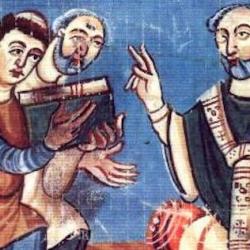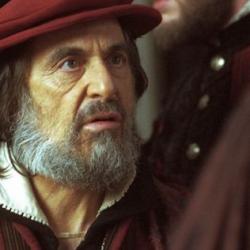Eamon Duffy tells the fascinating story of a Yale library manuscript, Beinecke MS 408, a book of herbal lore and astrology, written in an indecipherable code. It is also known as the “Voynich manuscript” because of the role of Wilfrid Michael Voynich (a “Polish-Lithuanian bookdealer and adventurer”) in its discovery and delivery to the library. From Duffy’s account, I’d say Voynich’s life is worthy of a film.
Duffy concludes from the material properties of the book that it cannot be a modern forgery, but adds that “it by no means follows that it is not in fact a medieval hoax. Four centuries of attempts to decode, decipher, or translate the text have all ended in bafflement. The finest cryptological minds of the twentieth century and sustained computer analysis alike have drawn a blank; the text refuses to yield meaning. Attempts to find parallels to the text in cabbalistical, hermetic, or alchemical code systems have all thrown up more disparities than resemblances. What if the book’s mysteries are in fact pure mystification, specious appearance that never had any real meaning?”
After all, even the botanical sections of the book are fantasy: “No student of the herbal illustrations has ever succeeded in identifying convincingly a single image as any known plant. Medieval herbals were rarely based on exact observation from nature, but even by the conventions of medieval botanical representation, the Voynich images are, collectively and singly, biological impossibilities. . . the ‘plants’ represented in the book’s herbal section never did and never could exist in nature: they are pure fantasy. And if the images are, then possibly the text is too.”
So, an elaborate joke? Duffy thinks it more likely the manuscript is the product of old fashioned greed. Some enterprising trickster convinced someone to pay him to write a cryptic book of the mysteries of the universe. After all, “The modern history of the Voynich manuscript, and the huge investment of time and effort by some of the most ingenious intelligences of the twentieth century in its decipherment, amply testify to human fascination with the possibility of uncovering secret knowledge.”
Which means that the manuscript itself is worthy of a film.















